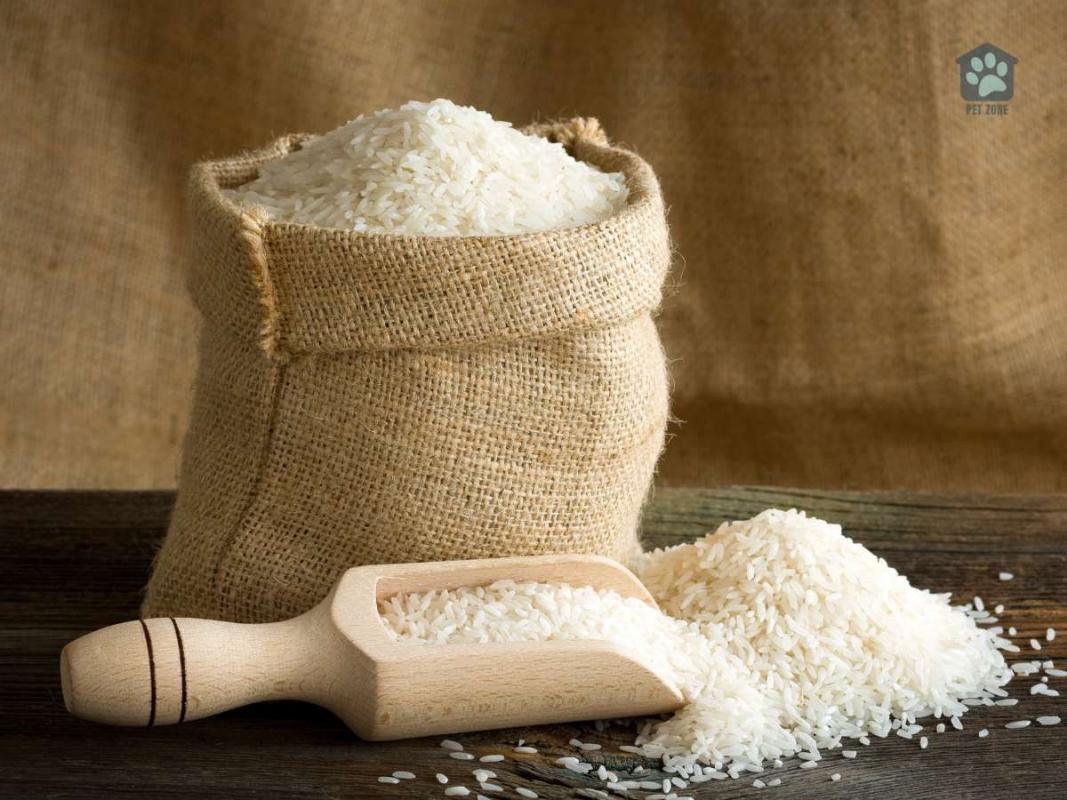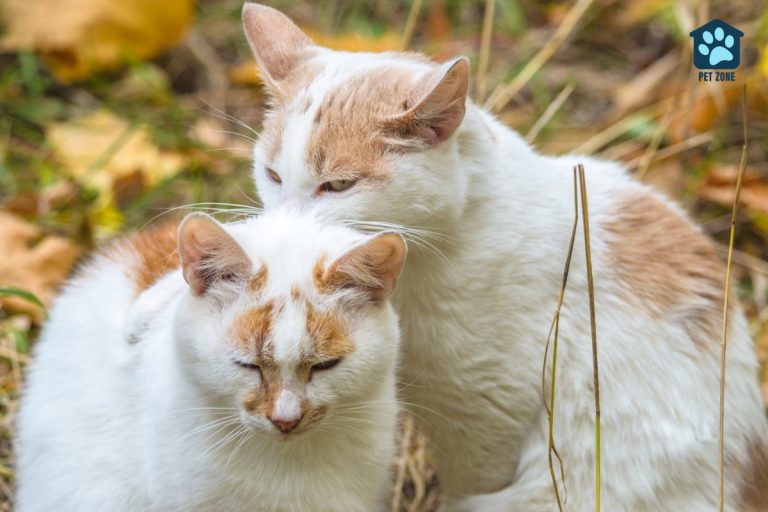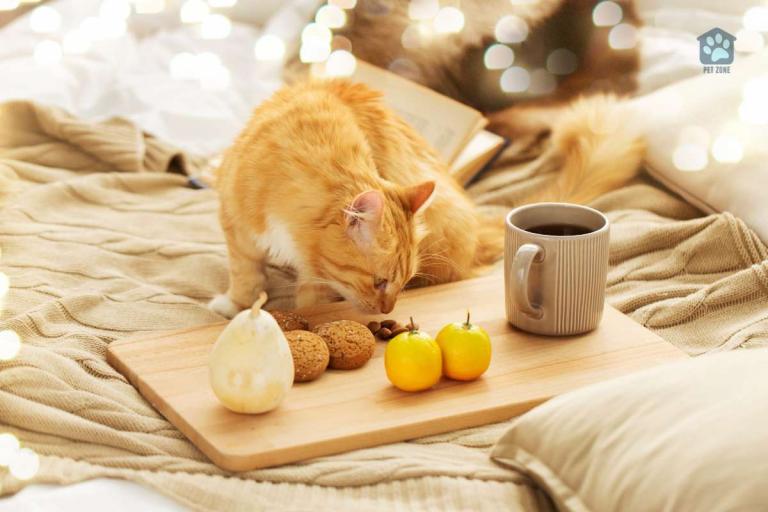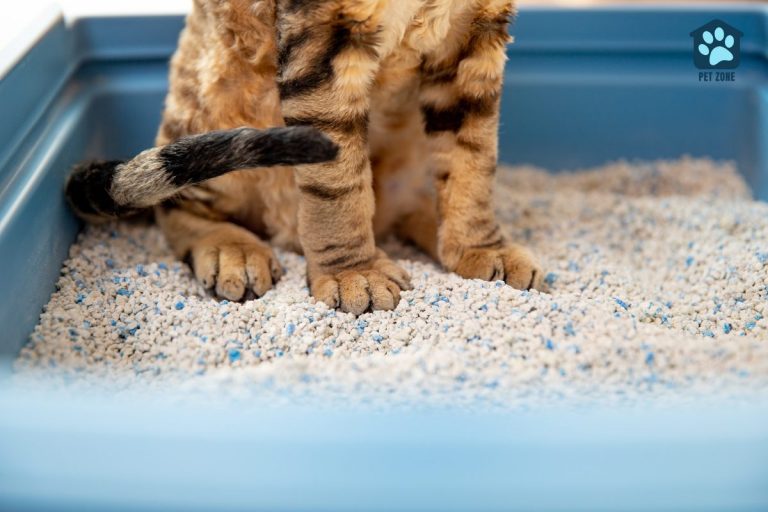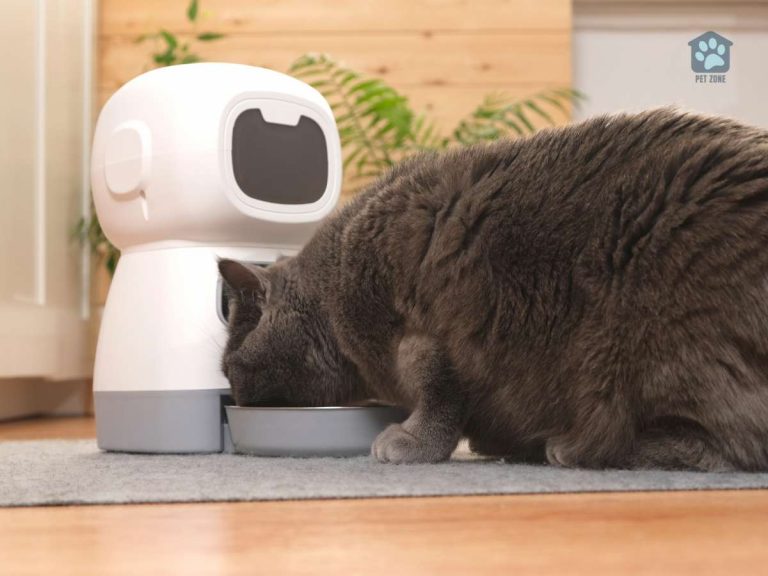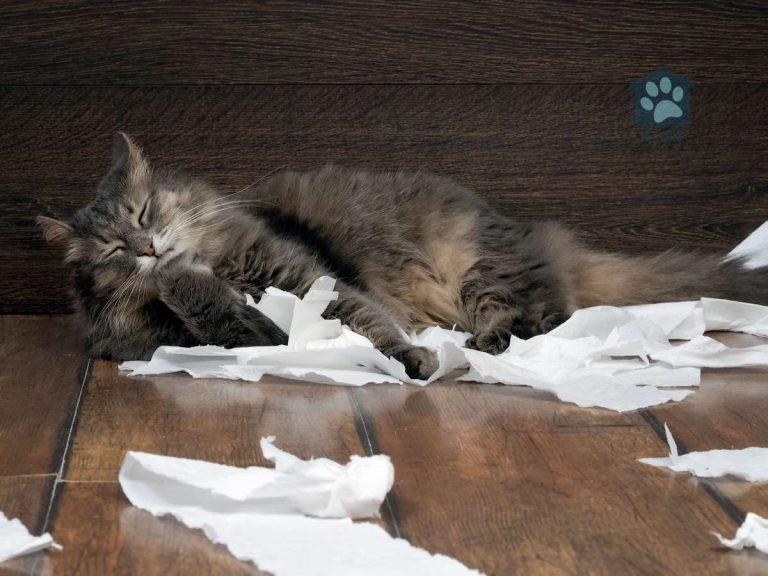Are you a cat owner interested in eco-friendly alternatives to traditional cat litter? Or maybe you need an emergency alternative when you run out of cat litter? One little-known fact is that rice can actually be used for this very purpose.
In this guide, we’ll dive deep into the pros and cons of using rice instead of cat litter, teaching you how to do it correctly if you decide it’s right for your feline friend. Stay tuned—for all you environmentally conscious cat lovers out there, this might be an earth-saving game changer!
Key Takeaways
- Rice can be used as an emergency cat litter alternative, an environmentally friendly option for eco-conscious cat owners.
- While rice is non-toxic and safe for cats, it is not the best cat litter, as it has limited odor control capabilities and is not as absorbent as traditional cat litter.
- Proper preparation, storage, placement, maintenance, and disposal are important when using rice as cat litter.
- There are other eco-friendly alternatives to rice such as wood shavings and recycled paper pellets that provide better odor control and absorbency.
The Benefits of Using Rice as Cat Litter
Rice can be a great alternative to traditional cat litter for eco-conscious cat lovers.
Environmentally friendly
Using rice as cat litter helps our planet. It is a natural resource that grows back every year. This makes it renewable and better for the earth than other types of litter that cannot be replaced.
Also, rice can become part of the soil again after it’s used. Since you can add used rice to your compost pile, there’s less waste going to the landfill. As a cat owner, this means you are doing your part to help keep Earth healthy when using rice in your pet’s litter box.
Non-toxic and safe
Rice is safe for cats. It won’t hurt them if they eat it by mistake. It does not have bad things that can make cats sick, like some cat litters do. Silica is a bad thing found in regular cat litter, but rice does not have this.
If your pet steps on the rice or scratches it out of the box, there’s no problem. The rice will not harm their paws or skin. So using rice as cat litter makes the litter box safe for both you and your furry friend.
The Drawbacks of Using Rice as an Alternative to Cat Litter
Using rice as cat litter does have some drawbacks. It has limited odor control capabilities, is not as absorbent as traditional cat litter, and there may be potential health concerns associated with its use.
Limited odor control
Rice cannot trap the bad smell from cat waste well. This is a big problem for pet owners who use rice as cat litter. Even if you clean it every day, some smell may still be left behind.
You can add baking soda to the rice to fight the odor. But this does not work as good as regular cat litter in hiding odors. So, your home might not smell fresh if you use rice for your kitty’s litter box.
Not as absorbent
Rice is not as absorbent as other materials used for cat litter. This means that it may not effectively soak up urine and control odor compared to traditional cat litter options. As a result, using rice as cat litter might require more frequent changes to prevent wetness and unpleasant smells in the litter box.
While rice can be used as a substitute for cat litter, keep in mind that it may not be the most efficient option when it comes to absorbing liquids from your cat’s waste.
Potential health concerns
Using rice as cat litter may pose potential health concerns for both cats and households. Rice can attract insects or rodents, which can lead to infestations and the spread of diseases.
Additionally, if not properly stored or changed regularly, rice may become a breeding ground for bacteria, leading to infections in cats. It’s important to note that commercial cat litters containing silica dust can also cause serious respiratory issues in cats.
Therefore, it is advisable to explore safer alternatives such as crystal litter, which is non-toxic and deemed safe for use by cats and humans alike.
Using Rice as a Cat Litter Substitute
To properly use rice as cat litter, it is important to first prepare and store the rice in a dry and clean container before using it. Place a layer of rice at the bottom of the litter box and regularly scoop out any clumps or wet spots.
When it’s time to dispose of used rice, consider composting or using it as mulch in your garden for an eco-friendly option. Proper maintenance will ensure that your cat’s litter box stays clean and odor-free.
Proper preparation and storage
To use rice as cat litter properly, follow these steps:
- Choose the right type of rice: Use plain white rice without any added seasonings or flavorings.
- Rinse the rice: Before using it as cat litter, rinse the rice thoroughly with water to remove any dust or debris. This will help ensure that it is clean and safe for your cat.
- Dry the rice: After rinsing, spread the rice out on a flat surface or baking sheet and allow it to dry completely. This will prevent it from clumping together when used as litter.
- Store in an airtight container: Once the rice is dry, store it in an airtight container to keep it fresh and free from moisture or pests. A sealed container will also help maintain its odor-absorbing properties.
- Use a scoop for cleaning: When your cat uses the litter box, use a scoop to remove any clumps or waste and dispose of them properly. The remaining dry rice can be reused multiple times before needing to be replaced.
Placement and maintenance
To ensure proper placement and maintenance of rice as cat litter, consider the following tips:
- Choose a suitable container: Use a clean, shallow litter box or a large tray that is easy for your cat to access. Make sure it has high walls to prevent spills.
- Provide adequate quantity: Fill the litter box with enough rice to create a layer that covers the bottom but is not too deep. It should be about 1-2 inches thick.
- Regularly check and clean: Scoop out any clumps or soiled rice promptly and dispose of them in the trash or compost bin. This will help maintain cleanliness and minimize odors.
- Add fresh rice as needed: As the rice absorbs moisture and odor over time, it may lose its effectiveness. Keep an eye on the condition of the litter and add fresh rice when necessary to ensure optimal performance.
- Consider using baking soda: To help control odors further, sprinkle a small amount of baking soda on top of the rice layer. This can help absorb additional smells.
Disposal options
Proper disposal of cat litter is important for maintaining a sustainable waste management system. Here are some options for disposing of rice as cat litter:
- Composting: Rice can be easily composted, making it an eco-friendly option. Remove any solid waste from the litter before adding it to your compost bin.
- Green Bin/Curbside Pickup: Check with your local waste management authorities to see if they accept rice as cat litter in the green bin or for curbside pickup.
- Flushable Litter: Some cat litters, including certain rice-based options, are labeled as flushable. However, always double-check with the manufacturer and follow any guidelines provided to ensure it is safe to flush.
- Landfill: If none of the above disposal methods are available or suitable for your situation, you can dispose of rice cat litter in the regular trash. Remember to seal it properly in a bag or container before throwing it away.
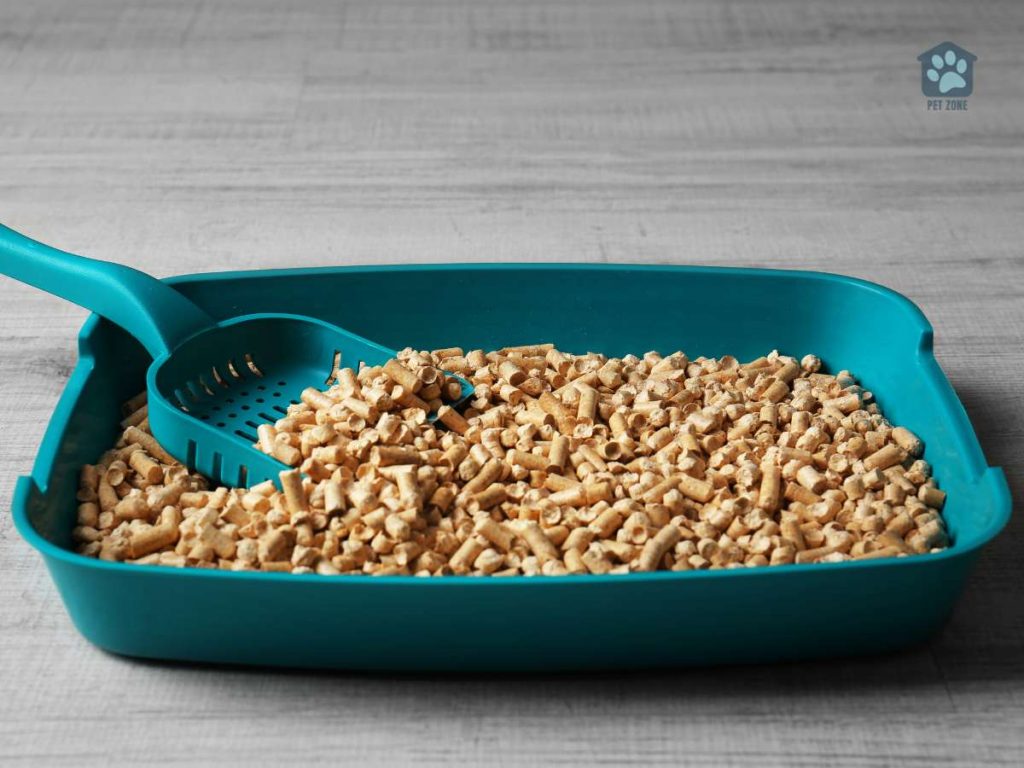
Homemade Cat Litter Alternatives to Rice
Looking for other options besides rice as cat litter? Check out our guide on eco-friendly alternatives that provide better odor control and absorbency.
Wood shavings
Wood shavings from pine, cedar, or aspen can be a great eco-friendly alternative to traditional cat litter. These wood shavings have excellent water absorption capabilities, making them more effective than shredded paper.
They are especially good at absorbing urine and controlling odors. Commonly used natural wood fibers like pine, cedarwood, juniper, spruce, and fir are ideal for creating wood-based cat litters.
Once used as cat litter, the wood shavings can even be repurposed as mulch in your garden. So if you’re looking for an environmentally friendly option that’s also highly absorbent and easy to dispose of after use, consider trying out wood shavings as your cat’s litter choice!
Recycled paper pellets
Recycled paper pellets are an excellent eco-friendly option for cat litter. They are made from recycled paper and can be highly absorbent, making them great at controlling odors. You can easily find these pellets at pet stores, and recycled paper litter is considered one of the best eco-friendly choices.
Another advantage of using paper pellets is that they are inexpensive, dust-free, non-tracking, and break down quickly. So if you’re looking for a sustainable alternative to traditional cat litter, give recycled paper pellets a try!
Other eco-friendly options
If you’re looking for more eco-friendly options for cat litter, there are a few alternatives you can consider. One option is using wood shavings as cat litter. Wood shavings are biodegradable and can help control odor in the litter box.
Recycled paper pellets are another eco-friendly choice that can provide good absorbency and odor control. Additionally, there are other options available such as flour, oats, and even homemade cat litter made from ingredients like shredded paper.
These alternatives offer environmentally friendly choices for conscientious cat lovers.
Conclusion
Using rice as cat litter can be a good choice for eco-conscious cat lovers. It is environmentally friendly and safe for your cat. However, it may not control odor as well as traditional litter and is less absorbent.
There are also other alternatives like wood shavings and recycled paper pellets that you can consider. Overall, rice can be a viable option in certain situations or as a temporary substitute when you run out of regular cat litter.
FAQs
1. Can I use rice as a cat litter alternative?
Yes, you can use rice as an emergency cat litter substitute. Rice will absorb urine and work well in the short term when run out of conventional cat litter.
2. How do I use rice instead of regular kitty litter?
If needed, put a layer of rice at the bottom of the box to replace your standard litter. Change it like you would with any other type of cat litter.
3. Is using rice for long-term cats’ care safe?
While this makes sense in an emergency situation, it may not be the best choice for long-term use because wet rice expands and could cause issues if ingested by cats.
4. Can old cats also adapt to new homemade alternatives like this?
Cats are creatures of habit but they can learn to use something homemade like rice or paper as a substitute when you have run out of traditional cat’s litter box contents.
5.Can fresh baking soda help if I want to keep using my usual products?
You can mix fresh baking soda with regular or clumping cat litter to aid performance and maintain cleanliness near your little box area.
6.What else should be there on my emergency list apart from this option?
There are many types such as paper that qualify itself among good options available; seeing another kind on this list will ensure efficient solutions while providing suitable toilet habits for pets.
As an Amazon Associate I earn from qualifying purchases.



